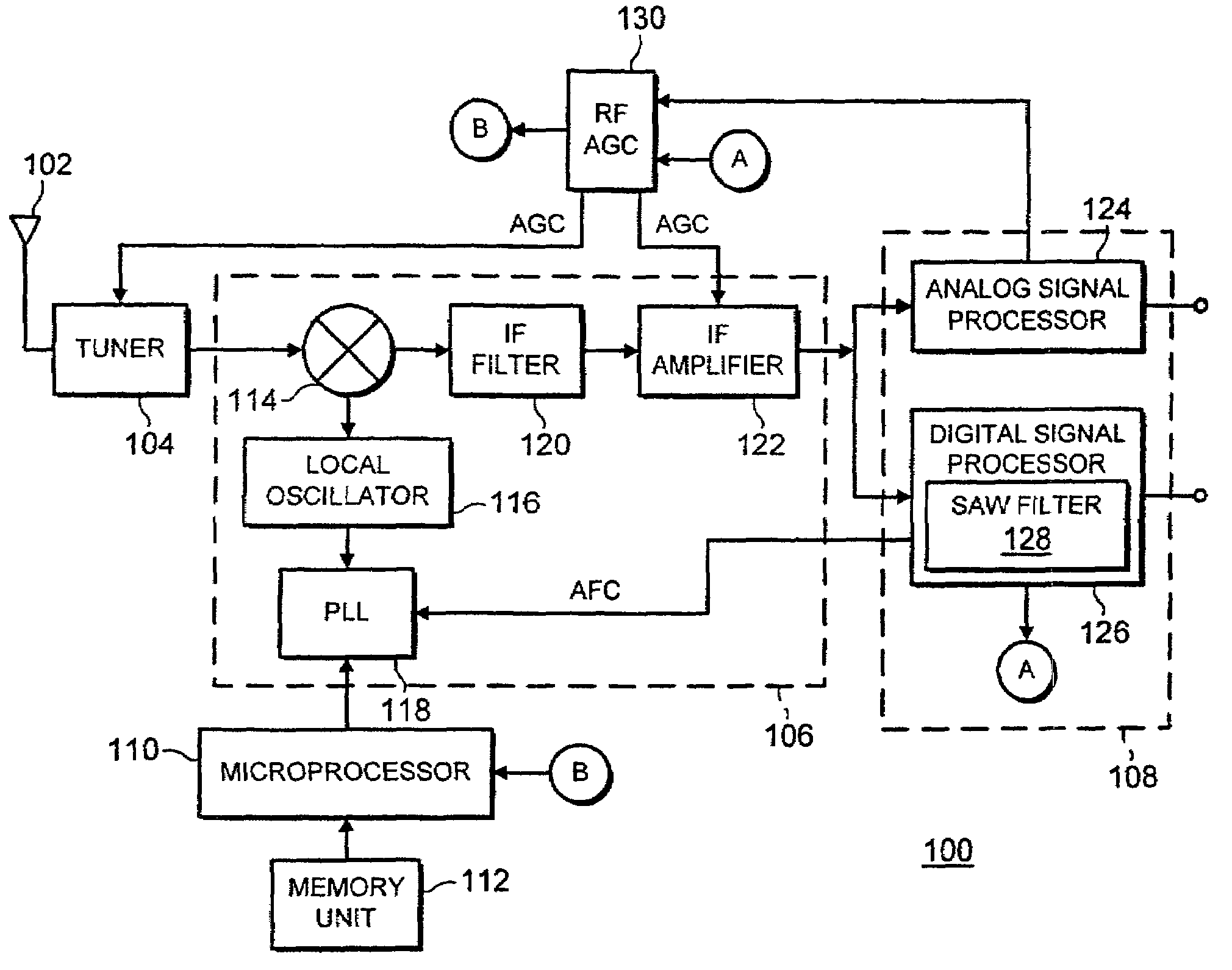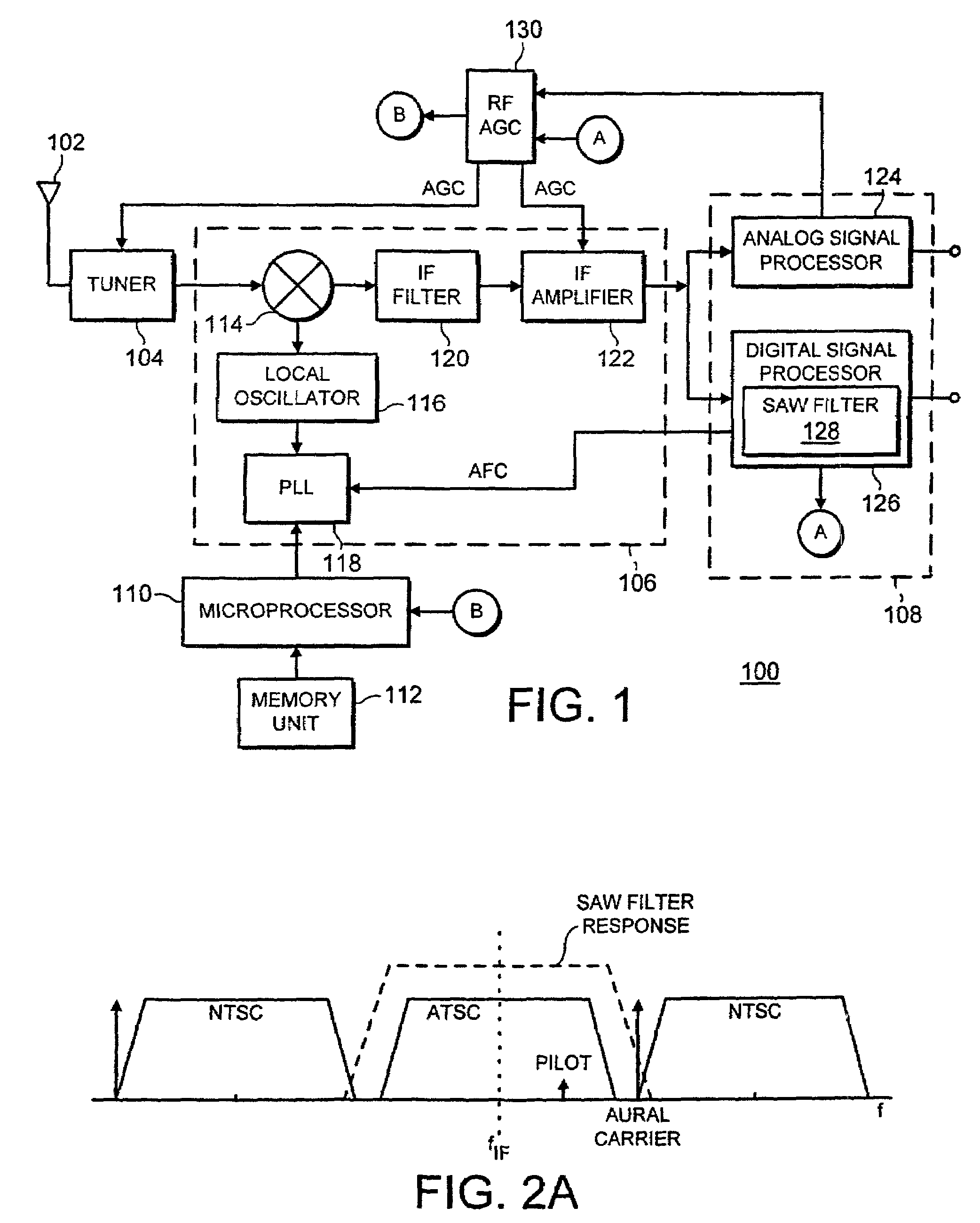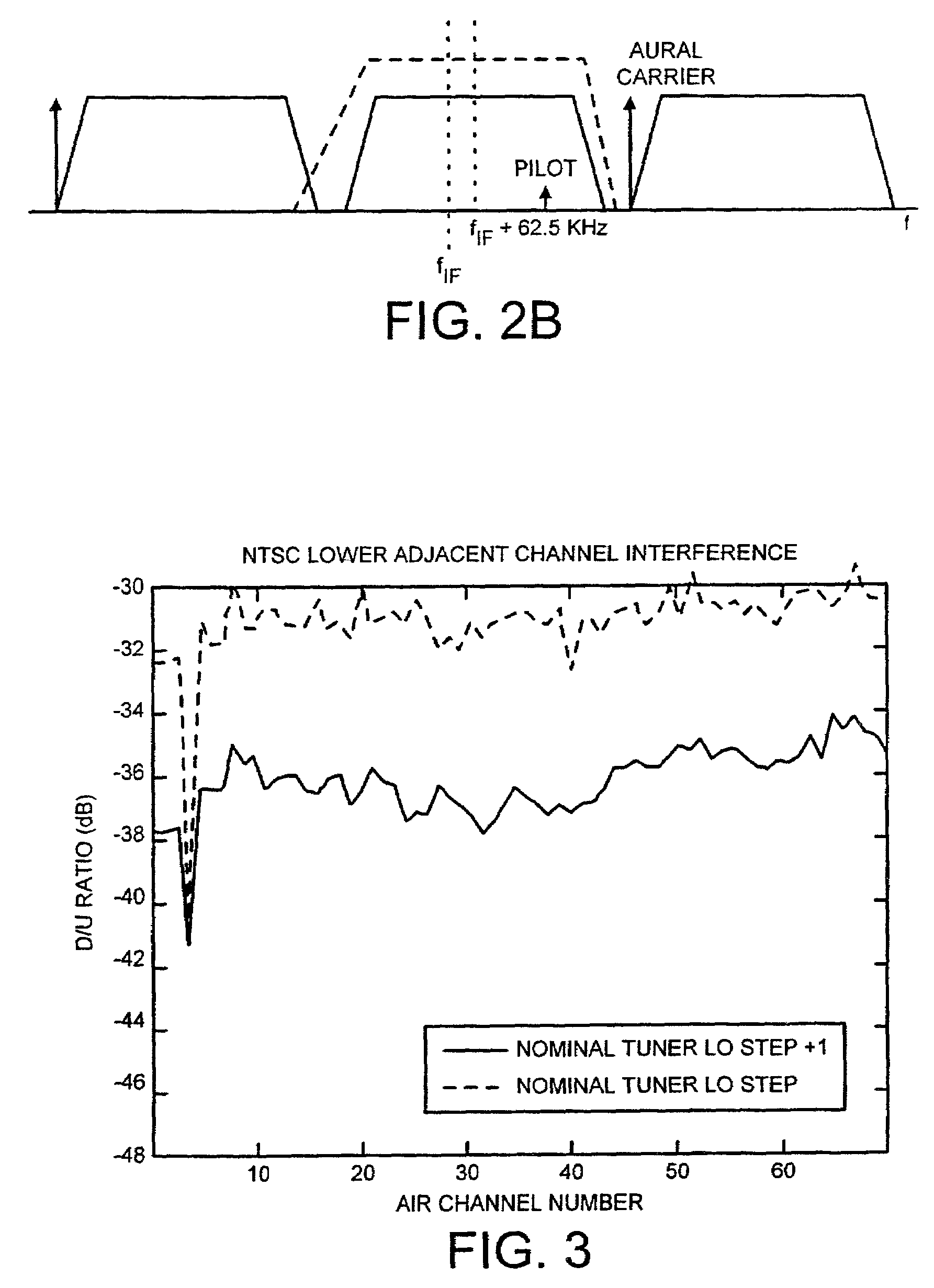Television receiver for digital signals with offset tuning provisions
- Summary
- Abstract
- Description
- Claims
- Application Information
AI Technical Summary
Benefits of technology
Problems solved by technology
Method used
Image
Examples
Embodiment Construction
[0014]FIG. 1 depicts a block diagram of a television receiver 100 in accordance with the present invention. The receiver 100 comprises a tuner 104 coupled to an RF source 102, a frequency conversion stage 106, a demodulation stage 108, a microprocessor 110 coupled to a memory unit 112, and an automatic gain control (AGC) circuit 130. The tuner 104 selects the radio frequency (RF) signal corresponding to a broadcast channel selected from a plurality of channel locations in a frequency band provided by the RF source 102. The RF signals associated with broadcast channels are analog and digital television signals. The analog television signal may comprise a conventional National Television Standard Committee (NTSC) modulated signal within the United States. The digital television signal may comprise a Vestigial Sideband (VSB) modulated signal in compliance with the Advanced Television Systems Committee (ATSC) standard A / 53, for example, a high definition television (HDTV) signal.
[0015]T...
PUM
 Login to View More
Login to View More Abstract
Description
Claims
Application Information
 Login to View More
Login to View More - R&D
- Intellectual Property
- Life Sciences
- Materials
- Tech Scout
- Unparalleled Data Quality
- Higher Quality Content
- 60% Fewer Hallucinations
Browse by: Latest US Patents, China's latest patents, Technical Efficacy Thesaurus, Application Domain, Technology Topic, Popular Technical Reports.
© 2025 PatSnap. All rights reserved.Legal|Privacy policy|Modern Slavery Act Transparency Statement|Sitemap|About US| Contact US: help@patsnap.com



